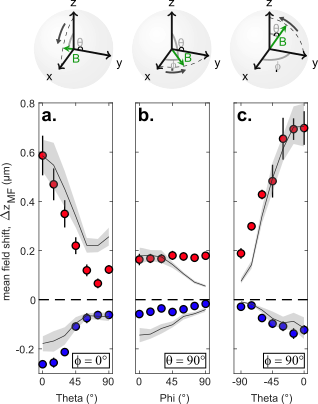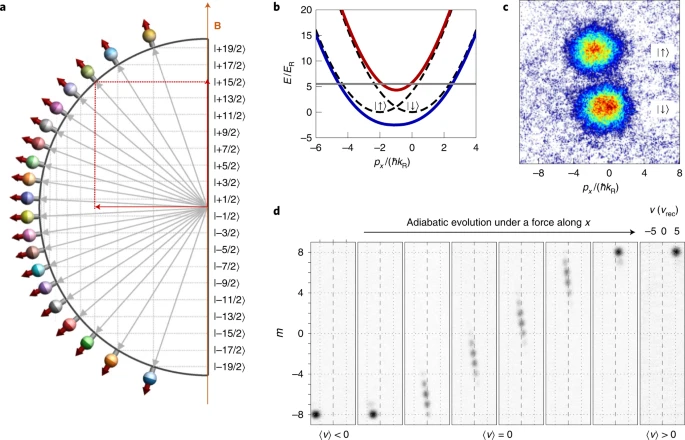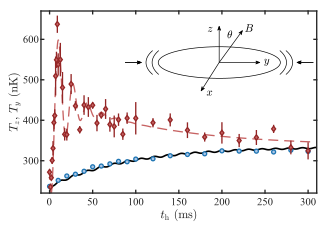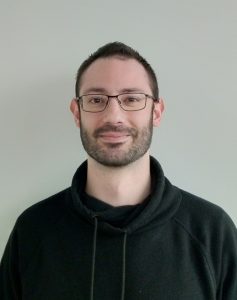Now published in PRA with collaborators from JILA, Boulder (Colorado, USA), we accurately determine the scattering length for the four bosonic erbium isotopes with highest abundance in the magnetic field range from 0G to 5G. We use the cross-dimensional thermalization technique and extract the scattering length by applying a fit of the complete Enskog equations of change and by utilizing an analytic formula for the so-called number of collisions per re-thermalization. We benchmark our results with the very accurate but experimentally more demanding lattice modulation spectroscopy, confirming the accuracy of our experimental protocol.
The paper can be accessed here: Phys. Rev. A, and the pre-print here: arXiv
 Thomas Bland
Thomas Bland
Inter-species interactions in an Er-Dy condensate

We present a first study of the influence of the dipole-dipole interaction on the total inter-species interaction in our erbium-dysprosium mixture. In collaboration with M. Modugno from the University of the Basque Country, we develop a model for our heteronuclear mixture, which describes qualitatively well our system and allows us to predict a lower and an upper bound for the inter-species scattering length. With this work, we make the first steps toward the study of the experimentally unexplored miscibility-immiscibility phase diagram and the realization of quantum droplets and supersolid states in heteronuclear dipolar mixtures.
This work is now published as the editors’ suggestion in Phys. Rev. A [paper] [arXiv]
Revealing the topological nature of the bond order wave in a strongly correlated quantum system
In collaboration with our colleagues from ICFO in Barcelona, we theoretically investigate the topological properties of the bond order wave in the extended Fermi-Hubbard model. We find that in a finite sized system, a topological order in the bond order wave regime can be stabilized experimentally allowing for the preparation of topologically protected edge modes. We finally propose an experimental scheme for the implementation and detection of this particular quantum phase.
The arXiv link is here
Maintaining supersolidity from one to two dimensions
Now published in Physical Review A, we theoretically investigate the role of trap geometry plays in determining the dimensionality of dipolar droplet arrays, which range from one-dimensional to zigzag, through to two-dimensional supersolids. Supersolidity is well established in one-dimensional arrays, and may be just as favorable in two-dimensional arrays provided that one appropriately scales the atom number to the trap volume. We develop a tractable variational model—which we benchmark against full numerical simulations—and use it to study droplet crystals and their excitations. We also outline how exotic ring and stripe states may be created with experimentally feasible parameters. Our work paves the way for future studies of two-dimensional dipolar supersolids in realistic settings.
You can see the paper here: E. Poli et al., Phys. Rev. A 104, 063307 (2021) [pdf] [arXiv]
Review article now published in Nature Physics!

Our review on the quantum many-body physics in ultracold magnetic lanthanides is now published in Nature Physics!
Take a look here: Developments in atomic control using ultracold magnetic lanthanides




